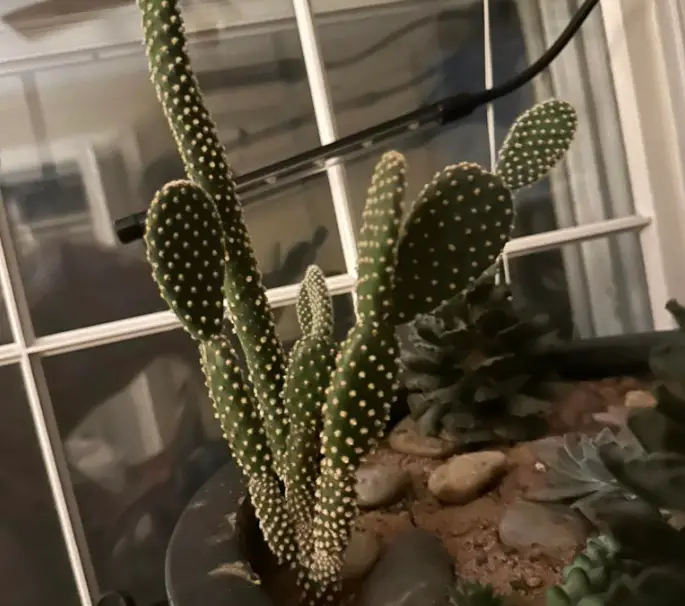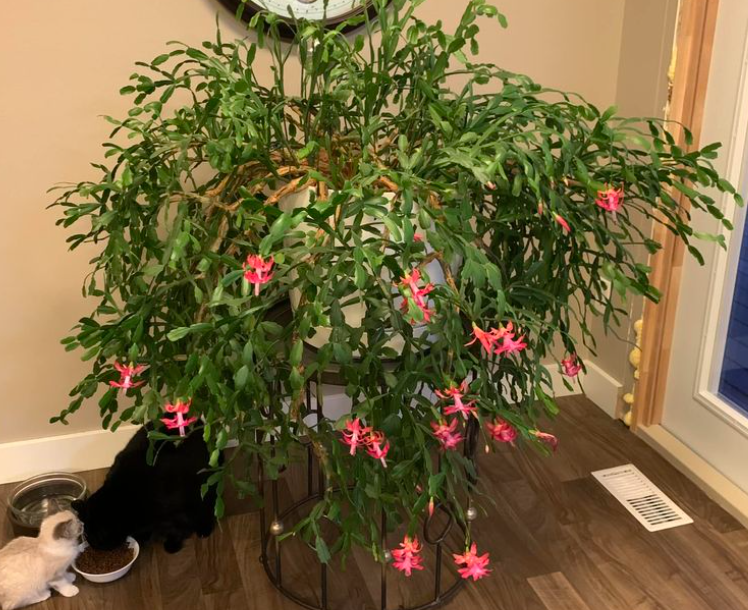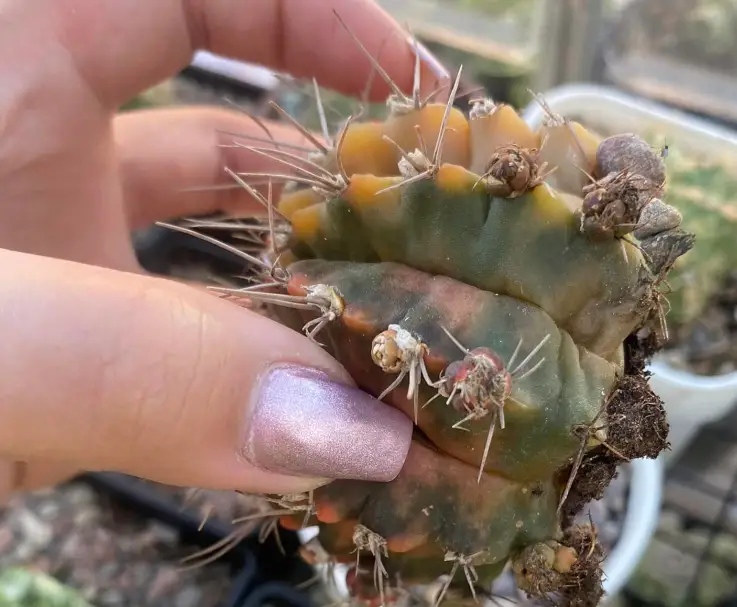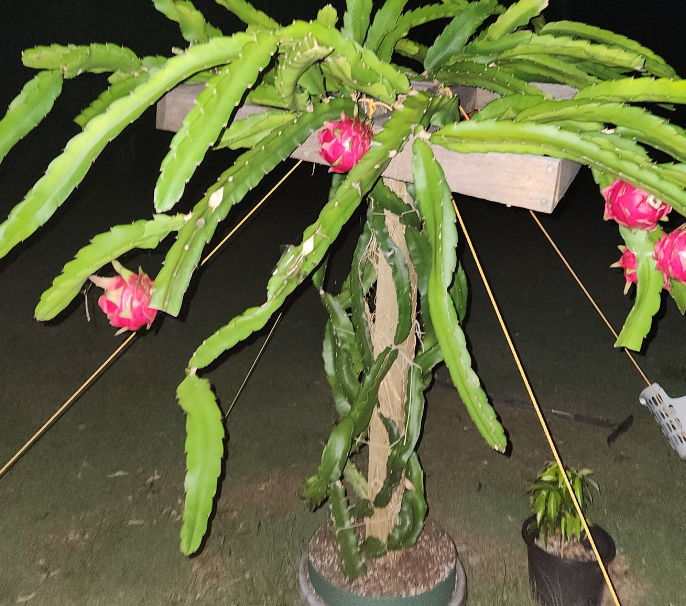How Fast Do Prickly Pear Cactus Grow? What to Know
Prickly pear cacti are relatively problem-free plants but may take several years to reach their full size. Their growth rate typically depends on the species, growth conditions, and specific care they receive.
As a rough estimate, prickly pear cactus grows about 3-6 inches in height and width yearly under optimal growth conditions.
It’s also worth noting that some species of prickly pear cactus, such as opuntia, can grow quite large and attain a height of 20 feet or more, but it may take many years to reach this size.
However, the University of Florida IFAS explains that this plant may grow rapidly and soft in rich, moist soils, making it susceptible to diseases and pests.
Here are important features of prickly pear cactus.
| Hardiness zones (USDA) | 4 to 11 |
| Height | 1 to 20 feet |
| Sunlight | Full Exposure |
| Soil pH | 6 to 7.5 |
| Bloom time | May to July |
| Flower color | Red, Yellow, or Purple |
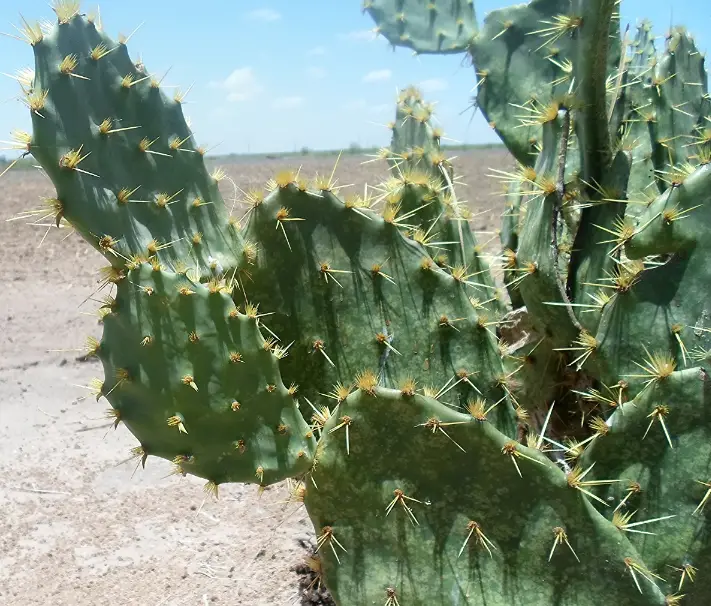
How to encourage prickly pear cactus to grow fast
According to researchers from the University of Nevada, prickly pear cacti may be able to provide fuel and food in arid regions due to their high heat tolerance and low water use, and there is a need to know how to know more about stunting disease, which causes cactuses to grow smaller pads and fruits.
However, to grow healthy prickly pear cacti, it is important to provide them with the following care requirements:
1. Choose a sunny location
Prickly pear cactus needs at least 6 hours of direct sunlight daily to grow and thrive. When planting, choose a sunny location, preferably away from other tall trees or buildings. If growing the cactus indoors, a south or east-facing window is ideal.
In some areas, west-facing windows can also be fine. Without enough sunlight, the cactus will find it hard to manufacture sufficient food through photosynthesis. This results in stunted growth, a cactus turning yellow or growing leggy.
2. Use a well-draining soil mix
Prickly pear cactus is susceptible to root rot, a condition commonly caused by excess water in the soil, which cuts the air supply around the roots. So it’s important to use a well-draining soil mix that allows excess water to drain away from the roots.
A cactus or succulent mix is ideal, or you can make your own soil by mixing equal parts potting soil, sand, and perlite or pumice. Be sure to use a pot that has drainage holes.
3. Water sparingly
The prickly pear cactus is a drought-tolerant plant with a great ability to conserve water. It only needs to be watered once every one or two weeks. However, how long the cactus can go without water will depend on the humidity and temperature in your home.
Water the plant deeply, but allow the soil to dry out completely before watering again to prevent root rot.
4. Provide good air circulation
Prickly pear cactus remains problem-free when grown in a place with good air circulation. Improper ventilation commonly leads to fungal diseases and pests. Avoid overcrowding your plants and consider growing them in areas with good air circulation.
5. Fertilize sparingly
The prickly pear cactus is a desert plant and does not need much fertilization to grow and thrive. To encourage growth, you can fertilize the plant once or twice a year using a balanced, water-soluble plant fertilizer as 20-20-20 diluted to half strength.
If grown for pad harvesting, a high-nitrogen fertilizer is recommended. But if you prefer more flowers and fruits, feed the plant monthly with a no-nitrogen fertilizer such as 0-10-10, explains Small Farm Center, University of California.
6. Prune after winter
Although not necessary, pruning prickly pear cacti can help to control their size, shape, and appearance. Trimming off deformed and unsightly pads also stimulates new growth. Below is how to prune a prickly pear cactus:
- Choose a time to prune before the cactus starts growing actively. This is usually in early spring when the frost has gone, and the cactus wakes up from the winter dormancy.
- Identify any damaged, diseased, or dead pads on the cactus and remove them first. These pads can be cut off at the base with scissors or pruning shears.
- Determine the desired shape and size of the cactus you like and remove any pads in excess or out of proportion. Be sure to leave enough pads on the cactus to sustain its overall health and appearance.
- Once you have finished pruning, allow the cuts to callus over before any watering. Be sure not to over-water the cactus.
Always sterilize your scissors or pruning shears before and after use to prevent the spread of any diseases to other plants. You can propagate the prickly pear pads to get more plants that you can donate to your friends and family instead rather than disposing of them.
Common prickly pear cactus problems
There are a few common problems that can affect prickly pear cacti:
- Rot: Too much water can cause the cactus pads and roots to become soft and rot. It’s important to avoid getting water on the pads of the cactus when watering and allow the soil to dry out completely between waterings.
- Shriveling: The pads will wrinkle and shrink if the cactus lacks water. Give the cactus enough water, but don’t over-water it.
- Pests: Pests such as scale, mealybugs, and spider mites can affect the prickly pear cactus. These pests can cause deformities on the cactus pads resulting in black or brown spots on the cactus.
- Sunburn: Too much exposure to sunlight can cause the cactus to develop sunburned areas on the pads. This is common in new plants that have not been acclimatized. It is important to place the cactus in an area that receives plenty of sunlight, but not too much.
- Frost damage: Although hardy, prickly pear cacti are not frost-tolerant and can be damaged by freezing temperatures. The cactus should be protected from frost, especially during the winter months. You may bring it indoors or use frost covers.
Final Thought
Prickly pear cactus is not just beautiful; it is also a source of nutritious fruit. If you are experiencing stunted growth with your prickly pear cactus, it is a good idea to try to identify the cause of the problem and take appropriate action.
This might involve improving air circulation, adjusting the watering schedule, treating pests, or providing the cactus with sufficient sunlight. If you cannot tell why your cactus is not growing, it may be helpful to seek the advice of a gardening expert or a plant specialist.
My name is Diane M Lewik, and I am the founder of this website. I am a degree holder in plant biology from the University of California – Berkeley. Over the years, I have cultivated a vast collection of succulents and I have learned a great deal about how to grow and care for these unique plants. Feel free to ask any questions in the comment section below.
